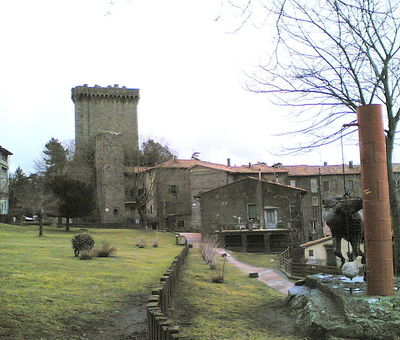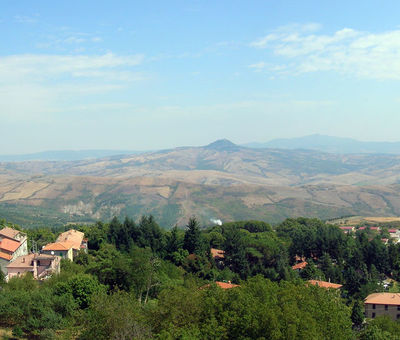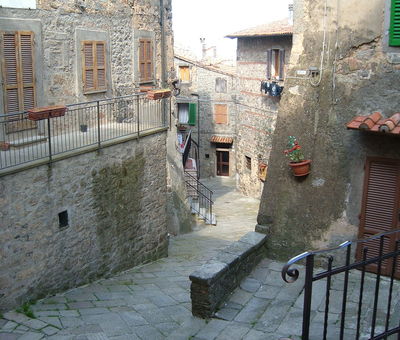A remote land
"The site is all rocks, with a round, irregular shape, surrounded and enclosed by castle walls that are now partly damaged or ruined. The air is healthy, and the countryside is of medium and adequate fertility in terms of grains and fodder" . This is a description by a scholar in 1700, but could easily have been written today. Piancastagnaio, the historic village at the foot of Mount Amiata, preserves images and stories that have been handed down for centuries. It has inspired poets and writers such as Carducci and Montale who were fascinated by it, particularly during autumn when the woods changed colour, rich with the scents of chestnuts and mushrooms. Carducci recalls the "white suns", the "murmuring of the woods" and the "whisper of shooting stars". Eugenio Montale depicts Piancastagnaio in autumn as being "...a sweet, remote village suspended like a cluster of bees swinging on a branch...the scent of quince pervading...".
The witches repent
This is a land with witches, like the whole Amiata area. There are terrible tales told, rarely with a happy ending, however, that's not the case with the witches of Piancastagnaio whose story has an unexpected ending. The story goes that they lived in a stone hollow basin in the garden of the Bourbon villa at the edge of the village. It's even said that they dug underground tunnels to reach it without being seen. One night, they came there to carry out a terrible plan, they would kidnap a child and kill him. Taking them from their parents in the night was easy, but when they found themselves at the edge of the hollow and had to decide who would kill it, they lost the urge. Although evil witches, it's said that each was also a mother. They hesitated for so long that the child's absence was noticed, giving the father time to reach his child and save them.
The "Crastatone"
Chestnuts are at the heart of this place. During the darkest years, they fed entire generations. The precious produce is obtained from the rich forests that surround Piancastagnaio. Today, now that chestnuts are no longer associated with poverty and hunger, their harvest is widely celebrated. Since the 1960s, due to popular demand, the chestnut festival is called "Crastatone". The term derives from "crastare", which is the act of cutting the chestnut before putting it on the fire, hence "crastata" (roasted chestnut). The festival is held on November 1st and the following weekend. Thousands flock to the center for a truly unique atmosphere with restaurants, bars, wine bars and diners offering a cuisine rich in tradition, promoting the autumnal Amiata flavors.







